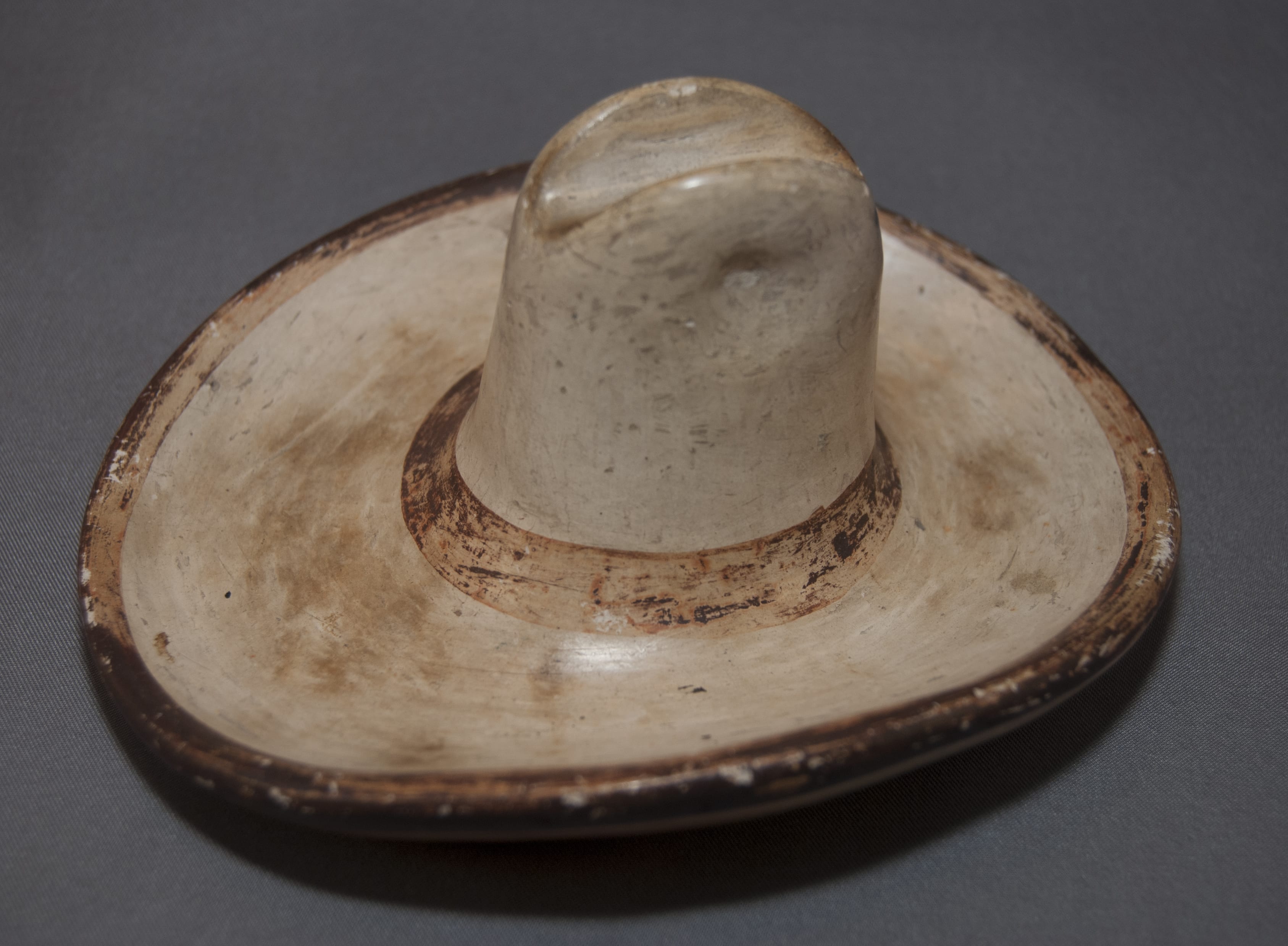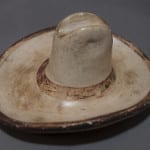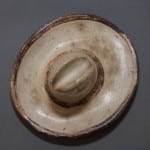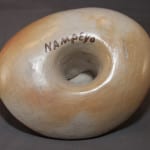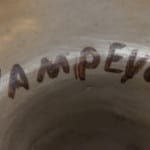This is the definitive tourist pot. Ashtrays for sale to tourists were a mainstay of the low-end Hopi pottery market from the turn of the century to at least the 1950s, but the cowboy hat motif makes this form the height of kitsch.
Katharine Bartlett, librarian/scholar at the Museum of Northern Arizona wrote:
“By 1920, (Hopi) pottery art had deteriorated in quality in favor of quantity. Every potter was busy turning out as many little curios as possible – ashtrays in the form of cowboy hats was a horrible example….The quality of black paint had also declined for it easily rubbed off” (1977:13).
Nampeyo and Fannie made some of the finest Hopi-Tewa pots ever formed. That they also made cowboy hat ashtrays such as 2011-32 indicates how they also appealed to the tourist market in order to make a living. As Ed Wade notes, Nampeyo “also produced curios in the form of chicken-headed ashtrays, Doric-columned candlesticks…objects of expediency not reflective of a purposeful style” (2012:127).
The signature “Nampeyo” on the bottom indicates that Nampeyo formed the hat after she became functionally blind (by 1920) and her pots were painted by one of her three daughters. In spite of conflicting statements in the literature, I am pretty convinced that Nampeyo’s eldest daughter Annie could not write. (See the discussion for pot 1999-13.) Middle daughter Nellie signed her pots using a lower case “a” and “e” in the signature (see 1991-03, 2003-07, and 2001-04) and this signature is formed with all capital letters. The signature on pot 2011-32 matches the writing of youngest daughter Fannie and I conclude that she painted this ashtray/hat. (See 2001-07, 2007-12, and 2009-01, for examples of Fannie’s signatures.) See Appendix E for a full discussion of “Nampeyo” signed potd.

